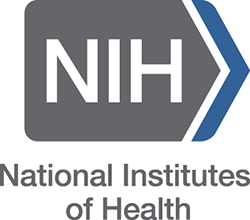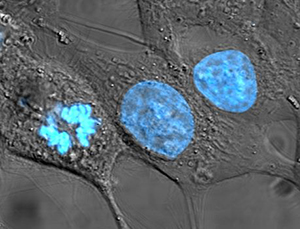 On Wednesday, the National Institutes of Health (NIH) announced that the agency had reached an understanding with the family of Ms. Henrietta Lacks regarding access to genomic data for the HeLa cell line, which was derived from cervical cancer cells taken from Ms. Lacks on February 8, 1951. Ms. Lacks eventually died of cancer on October 4, 1951. According to the NIH release, "the understanding gives the Lacks family a seat at the table in reviewing applications for controlled access to Henrietta Lacks' whole genome data."
On Wednesday, the National Institutes of Health (NIH) announced that the agency had reached an understanding with the family of Ms. Henrietta Lacks regarding access to genomic data for the HeLa cell line, which was derived from cervical cancer cells taken from Ms. Lacks on February 8, 1951. Ms. Lacks eventually died of cancer on October 4, 1951. According to the NIH release, "the understanding gives the Lacks family a seat at the table in reviewing applications for controlled access to Henrietta Lacks' whole genome data."
NIH Director Dr. Francis S. Collins indicated that the sequencing and posting of the HeLa genome by researchers in Germany "brought into sharp relief important ethical and policy issues." In response to concerns from the Lacks family, the German researchers took down the HeLa genomic data. Dr. Collins noted that the NIH met with members of the Lacks family to listen to their concerns, and "arrived at a path forward that respects their wishes and allows science to progress."
 The result of the discussions between the NIH and the Lacks family is a new controlled access policy for full genome sequence data from HeLa cells. Under the policy, researchers who agree to the terms set forth in the HeLa Genome Data Use Agreement will be able to apply to the NIH for access to HeLa genomic data. In addition, two representatives of the Lacks family will serve on a six-member working group that will review proposals for access to the HeLa genomic data. NIH-funded researchers who obtain full genome sequence data from HeLa cells will also have to deposit such data into a single database for future sharing (other researchers are being encouraged to do the same). Finally, all researchers who use or generate genomic data from HeLa cells will now be asked to include an acknowledgement and expression of gratitude to the Lacks family in their publications.
The result of the discussions between the NIH and the Lacks family is a new controlled access policy for full genome sequence data from HeLa cells. Under the policy, researchers who agree to the terms set forth in the HeLa Genome Data Use Agreement will be able to apply to the NIH for access to HeLa genomic data. In addition, two representatives of the Lacks family will serve on a six-member working group that will review proposals for access to the HeLa genomic data. NIH-funded researchers who obtain full genome sequence data from HeLa cells will also have to deposit such data into a single database for future sharing (other researchers are being encouraged to do the same). Finally, all researchers who use or generate genomic data from HeLa cells will now be asked to include an acknowledgement and expression of gratitude to the Lacks family in their publications.
The NIH announcement also appeared in the journal Nature, where it was accompanied by a paper on a whole genome analysis of the CCL-2 strain of HeLa cells, which identifies an insertion of the human papilloma virus near an oncogene that may explain the aggressiveness of Ms. Lacks' cancer (Adey et al., "The haplotype-resolved genome and epigenome of the aneuploid HeLa cancer cell line," Nature 500: 207–11 (08 August 2013)).